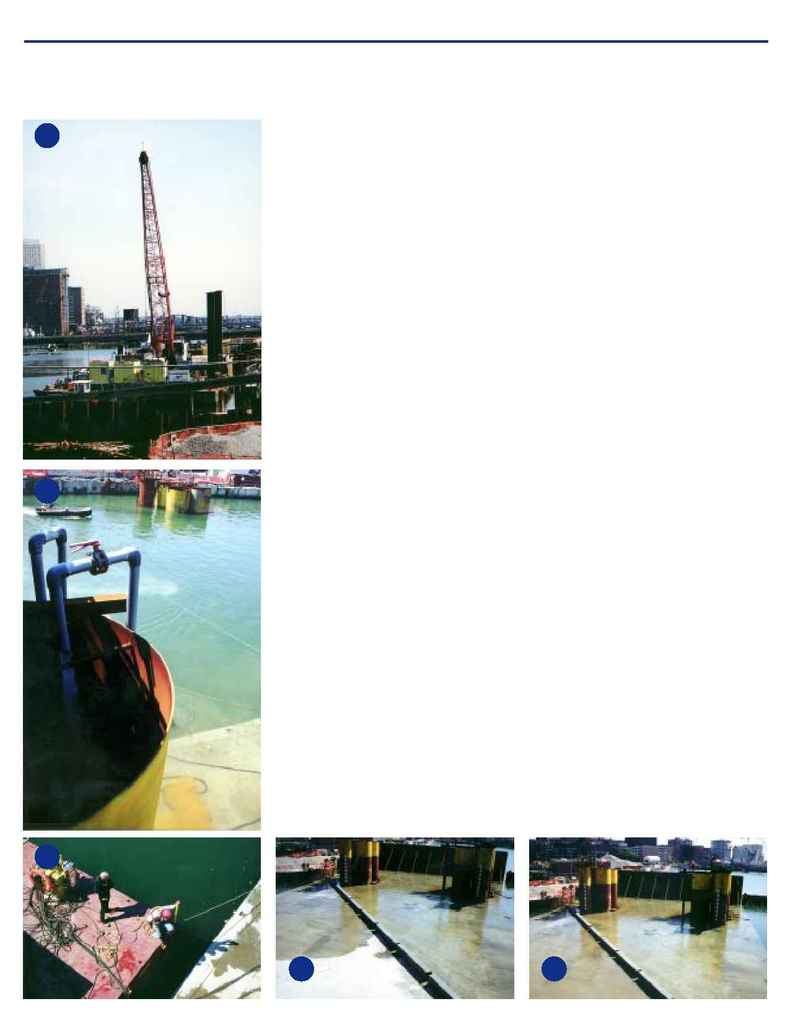
The Scoop
Page 4
MCC's Fort Point Channel
O
n Tuesday, June 19, the sixth Immersed
Tube Tunnel (ITT), a concrete box
weighing roughly the same as a battle-
ship, was lowered into place in a dredged out
trench on the watery floor of Boston's Fort
Point Channel. To complete the channel
crossing and the Central Artery's connection
of I-90 with the Ted Williams Tunnel, Mod-
ern Continental crews are now building the
cut-and-cover mainline tunnel boxes east of
the ITTs in the basin and west of the units
that link the crossing to adjacent contracts.
After construction of the tunnel, the Casting
Basin in effect a huge drydock 1,000 feet
long, 300 feet wide, and 60 feet deep will
be backfilled.
Since the first ITT section settled
into place on the bottom of Fort Point
Channel in January 2000, this job has
received a tremendous amount of atten-
tion, both within the construction indus-
try and in the public eye. Experts dubbed
it the most complicated and challenging
part of the Big Dig, and noted that this
first use of ITT techniques on any con-
struction project in the United States.
And recently, the American Concrete In-
stitute (ACI) recognized this innovative
and creative approach with their 19th
Annual Concrete Award in the Heavy
Construction category.
"It's always satisfying to be recognized
with an award by our peers in the con-
struction industry," said Vice President
John Pastore, who is overseeing the
project. "Even more so in this case be-
cause the channel team had to operate
under additional constraints." Among
those, he explained, were weather, tides,
and sea levels all factors that directly
affected the float-out process.
The Fort Point Channel job began in
1997, when Modern's crews began build-
ing the actual ITT sections in the Cast-
ing Basin, which itself had been con-
structed under a previous Modern con-
tract. Central Artery officials knew that
because of low bridges at the opening of
the channel, they wouldn't be able to barge
in prefabricated steel tubes, as they had
for the Ted Williams Tunnel. Over
450,000 cubic yards of dirt was excavated
from the south side of the channel and
the basin was sealed off by stone-filled
cofferdams. After the initial float-out in
January 2000, a second ITT was moved
into place about three months later. The
remainder of the floats were made in April
and June this year.
Of the six tunnels, the longest is 414
feet, the widest 174 feet, and the heaviest
weighs approximately 100,493,000
pounds. Sections WB2 and EB2, the two
middle sections of the span, lie just six
feet above the roof of the MBTA's Red
Line tunnel. To ensure that the weight of
the new crossing wouldn't damage the ex-
isting tunnel, six-foot diameter shafts were
drilled into the bedrock up to 185 feet
deep in some places for the ITT foun-
dations. The remainder of the tunnel
tubes lie on similar drilled shafts or on
grout bags.
Underneath the surface, the tunnel
pieces are jacked together with hydraulic
arms and water is pumped out of the
tubes, allowing engineers to use the force
of the outside water pressure to squeeze
1
2
3
4
5
